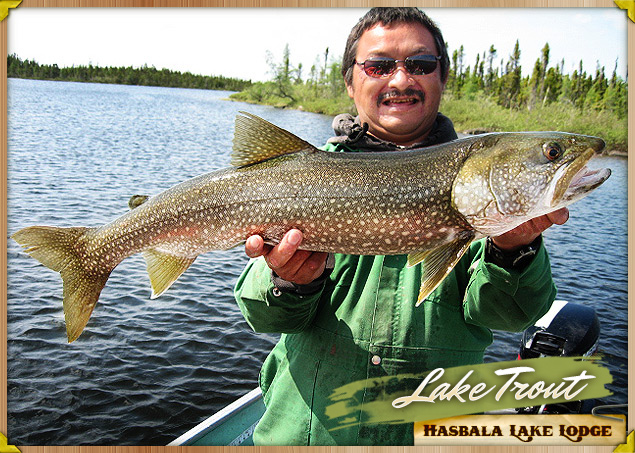


Images: 1 2 3 4 5
all about lake trout
Mackinaw, salmon trout, gray trout, Great Lakes char, togue: these are some of the local names given to the lake trout. Some even refer to it as landlocked salmon even though the term actually applies to the landlocked variety of the Atlantic salmon.
With so many names, it's obvious that the fish enjoys great popularity. And no wonder. It strikes hard and puts up considerable resistance. It can sometimes reach trophy-size proportions. When a fish has matured on a good diet, its meat can be excellent. And it's an elusive fish, teasing the skills of even the most accomplished angler.
Adult Lake Trout in Hasbala range in length from 16 to 45 in.
lake trout. the Name
- Salvelinus, an old name for char, from the same root as the German, Saibling, (little salmon)
- namaycush, a native American name, said to mean "tyrant of the lakes". Compare with the Ojibwe namê, "sturgeon", and namégoss, "trout"
Description
- Length
Typically 17"-27" and known to exceed 4' - Weight
Typically 3-9 lbs and known to exceed 100 lbs - Color
- The least colorful of the trouts
- Light green or grey, dark green, brown or almost black with irregular, lighter colored spots
- Light underside
- Leading edges of pectoral, pelvic, and anal fins are reddish-orange with a narrow whitish margin,
- During the fall spawning season, the fins near the tail become a pale orange.
- Body
It has a moderately elongated shape with the tail deeply forked.
- Head
It's head is large with well developed teeth on jaws, tongue, and roof of mouth
- Lifespan
The Lake Trout is long-lived, the largest fish being 20 or more years old
does not reach sexual maturity until 8-10 years of age
Habitat
- Prefers water temperatures of around 50º F., but will venture into warmer water on occasion. Hence, it is restricted to still waters of large, deep lakes and reservoirs and some large streams (although in the Northwest Territories it is also found in shallow tundra lakes).
- Inhabits deep waters (20'-150')
- Least tolerant of salt water of all the chars.
Food
- Predaceous, feeding upon crustaceans, insects, many species of fish, and even small mammals.
- Young lake trout feed on plankton, insects, freshwater shrimp, and other aquatic invertebrates.
- Larger lake trout typically eat other species of fish, mostly Lake Whitefish and Cisco(Tullibee).
- Feeds near the surface of a lake when the water is cold (spring and fall). During the summer, the cold denser water sinks to the bottom of the lake and the trout follow it down.
catch and release
We have implement the catch and release program. We measured and photograph then release our catch. We handle the Lake Trout with the upmost care. Care is required in unhooking a Trout. It is recommended that barbless trebles are used when angling for this species as it simplifies unhooking. Unhooking should be accomplished using long forceps—30 cm artery clamps are ideal.
The Lake Trout should be kept out of the water for the minimum amount of time possible, and should be given some time to recover before being weighed and photographed.